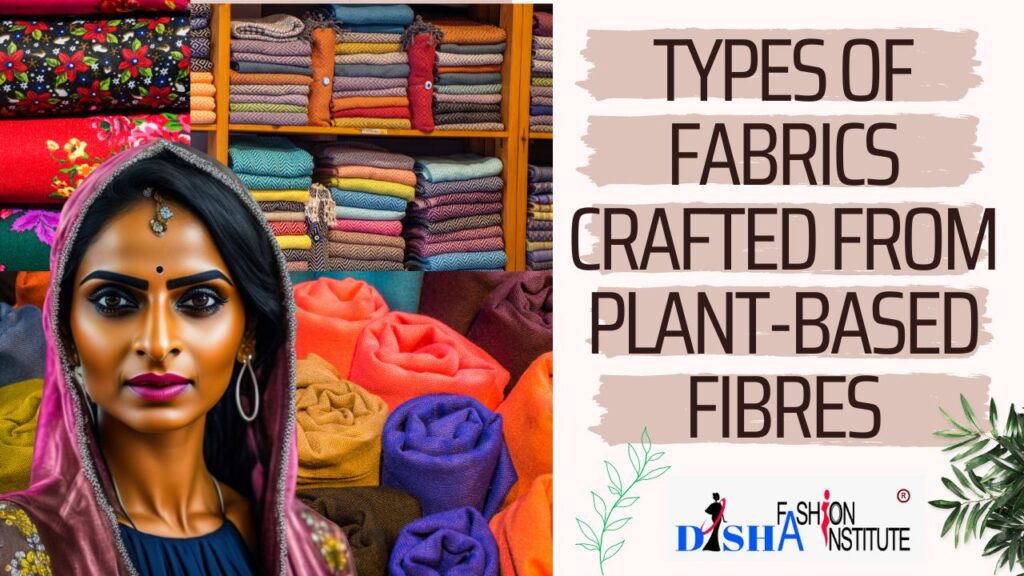Cellulose is the main structural component of plant cell walls. It is a natural polymer made up of glucose units. Cellulose fibres can be extracted from various plant sources, including wood, cotton, bamboo, hemp, and flax.
Table of Contents
Cellulose fibres have gained popularity due to their unique properties and sustainability. They are biodegradable, renewable, and have a low environmental impact compared to synthetic fibres. These fibres possess excellent strength, durability, and moisture absorption properties. They are also comfortable to wear, breathable, and often used in textile applications such as clothing, home furnishings, and industrial textiles. Cellulose fibres can be easily processed into different forms, including yarns, fabrics, papers, and nonwoven materials. They are versatile and can be blended with other fibres to enhance specific characteristics.
Before going into the details of different types of fabric and their uses, if you want to learn What is fibre? What different types of fibres exist and how different types of fibres are obtained to make fabric then click the below button.
This article explores the properties, production methods, and eco-friendly benefits of cellulose fibres, paving the way for a greener and more sustainable future.
#1 What is Cotton Fabric?
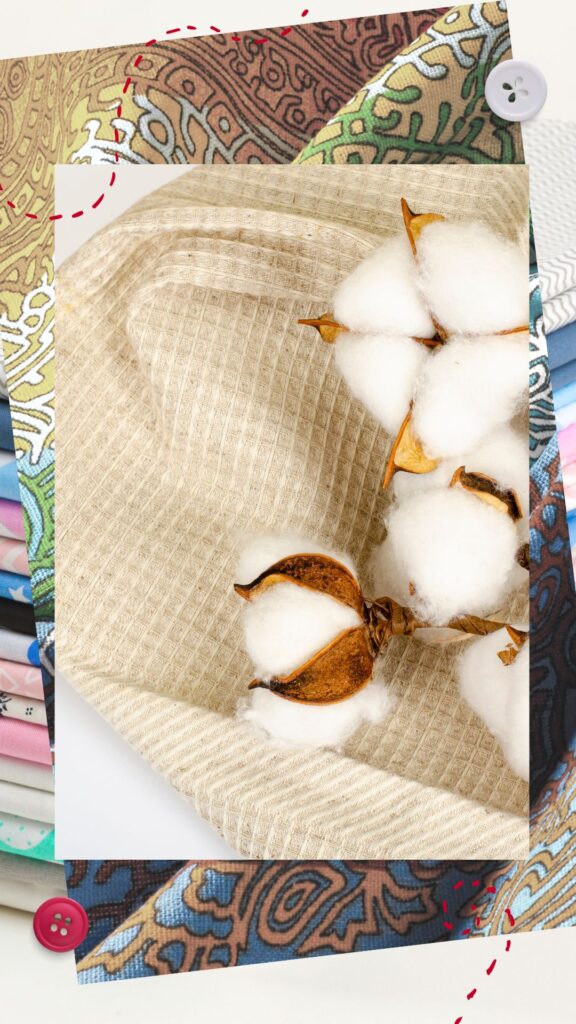
Cotton is the most common type of fabric used all over the world. It was introduced in Ancient India. The earliest evidence of the use of cotton is from the Merhgarh and Rakhigarh sites of the Indus Valley civilization, India, which dates back to 5000 BC. There are some varieties of cotton-like Pima cotton, Egyptian cotton, Supima Cotton etc.
Cotton is a natural fibre collected from the seed of cotton trees. It has been cultivated for thousands of years and is one of the most widely used fibres in the textile industry. Here are some properties and common uses of cotton:
Characteristics of Cotton Fabric
- Cotton is more durable than silk, and extremely breathable. But it is prone to bubbling.
- Cotton is a very absorbent fabric because there is a lot of space between the cotton fibres. Due to its absorbent nature, cotton takes dye very easily and can be made into a wide variety of colours.
- Cotton has excellent moisture-absorbing properties, capable of absorbing up to 27 times its weight in water. It can absorb perspiration and keep the skin dry.
- Cotton is hypoallergenic and less likely to cause skin irritation or allergies, making it suitable for people with sensitive skin.
- Cotton is known for its soft and comfortable feel, making it pleasant to wear against the skin.
Uses of Cotton Fabric
Cotton is a commonly used material to make all kinds of garments, and upholstery items. This is used to make different types of garments, socks, sheets, blankets, bags, etc.
It is used in the manufacturing of medical products like bandages, gauze, and swabs due to its absorbent and hypoallergenic properties. It is also used in personal hygiene products like cotton pads and cotton balls.
They are used in industrial applications such as filters, and packaging materials, and as a reinforcement in composite materials due to their strength and durability.
#2 What is Linen Fabric?
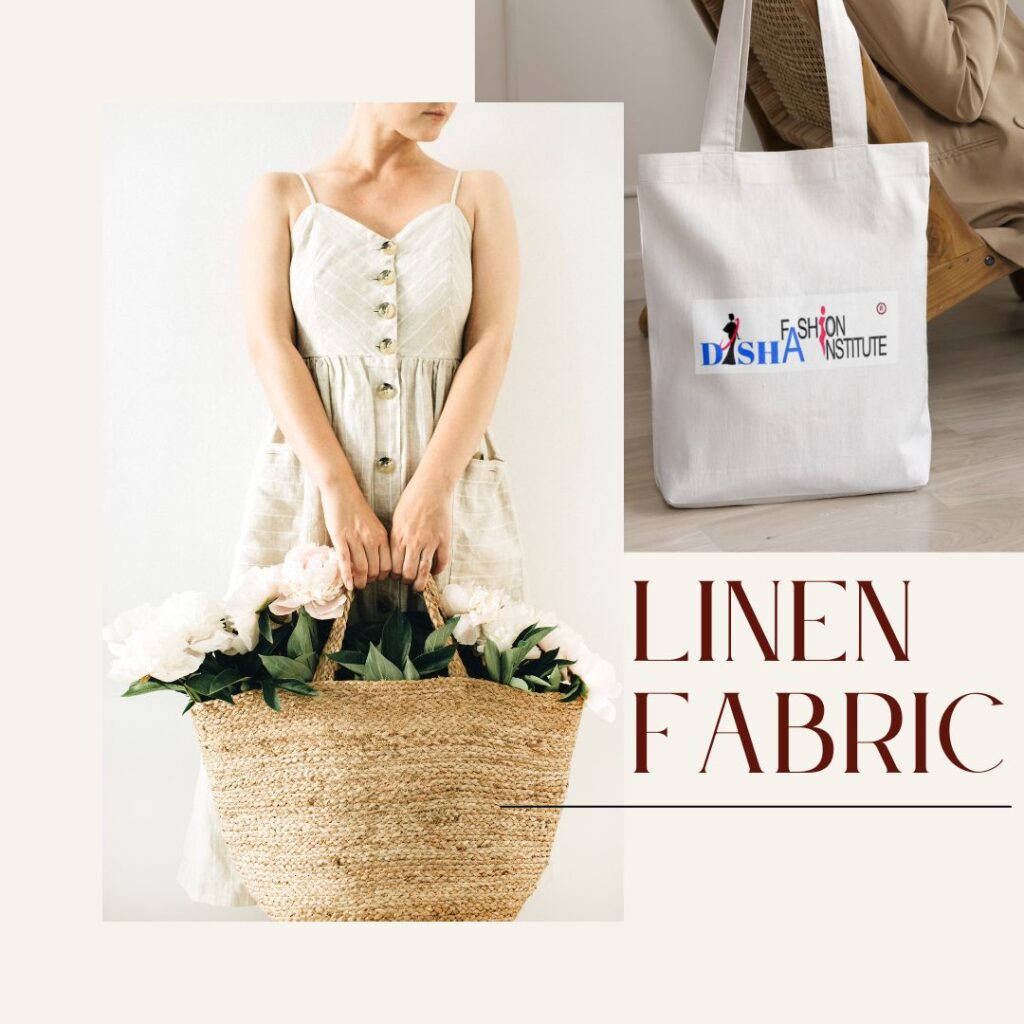
Linen is one of the oldest types of fabric in the world. Its history can be traced back to ancient civilizations in Egypt, Mesopotamia (modern-day Iraq), and the Indus Valley (modern-day Pakistan and India). The ancient Egyptians, in particular, were renowned for their expertise in linen production and religious usage during mummification. Linen is similar to cotton fabric, but unlike cotton, it is made from the stems of the flax plant.
Characteristics of Linen Fabric
- Linen feels cool to touch. It is smooth and gets softer the more it is washed.
- It has no pilling tendency. But this fabric wrinkles very easily. So, formal garments made out of linen require more ironing. Though these wrinkles in linen garments are considered to be its additional charm, so many wear linen without ironing.
- Linen is a type of fabric which is strong and durable, even stronger than cotton. It has high tensile strength and so can withstand frequent use and washing.
- It is highly breathable, allowing air to flow through the fabric.
- Linen has a natural lustre and slight sheen that gives it an elegant and sophisticated appearance.
- It is hypoallergenic and suitable for people with sensitive skin. It has natural antibacterial properties and is resistant to dust mites, making it a good choice for individuals prone to allergies.
Uses of Linen Fabric
Linen is used in a wide range of clothing items; home items like tablecloths, pillow covers; upholstery, soft furnishings and curtains etc.
#3 Canvas Fabric: Unveiling Its Ancient Origins and Modern Applications
The ancient Egyptians used a form of woven fabric made from flax fibres for sails, clothing, and other purposes which we today call canvas fabric. Canvas is a plain-weave fabric, made of heavy cotton or linen yarn. Cotton canvas is more common and widely used, while linen canvas is considered to be of higher quality and often used for professional art canvases. Synthetic fibres like polyester can also be used to create canvas-like fabrics, offering additional benefits such as increased durability or water resistance. However, traditional canvas fabric is primarily made from cotton or linen fibres. Sometimes it is treated with PVC or gesso. It is also known as Duck, tarp, fly, awning cloth, or tenting.
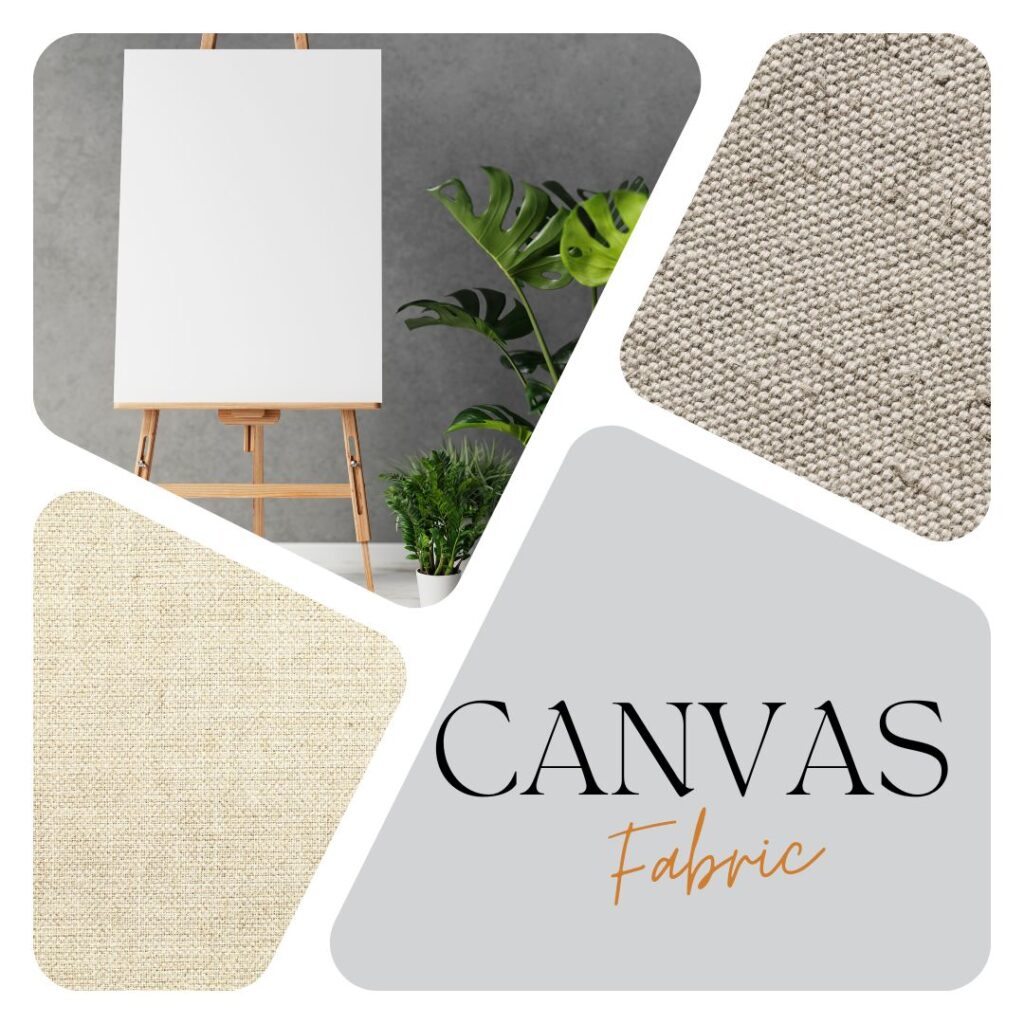
Characteristics of Canvas
- Canvas is known for its durability and strength, making it suitable for heavy-duty applications.
- It is very durable and sturdy and has great heat resistance, and water resistance (though not entirely waterproof).
- This fabric does not pill at all. But due to low breathability, it is not suitable to use to make dresses.
Uses of Canvas
Being a great outdoor fabric, it is used to make bags, shoes, sails, tents, tarps, pants, jackets, upholstery covers, art supplies, backpacks, handbags, and winter work jackets.
Historically canvas is a popular painting medium. It was popularized by Venetian Renaissance artists. But long before that, in Egypt, canvas had been used as the default material for making sailcloth.
#4 Muslin: The Ancient Elegance Reimagined in Modern Times
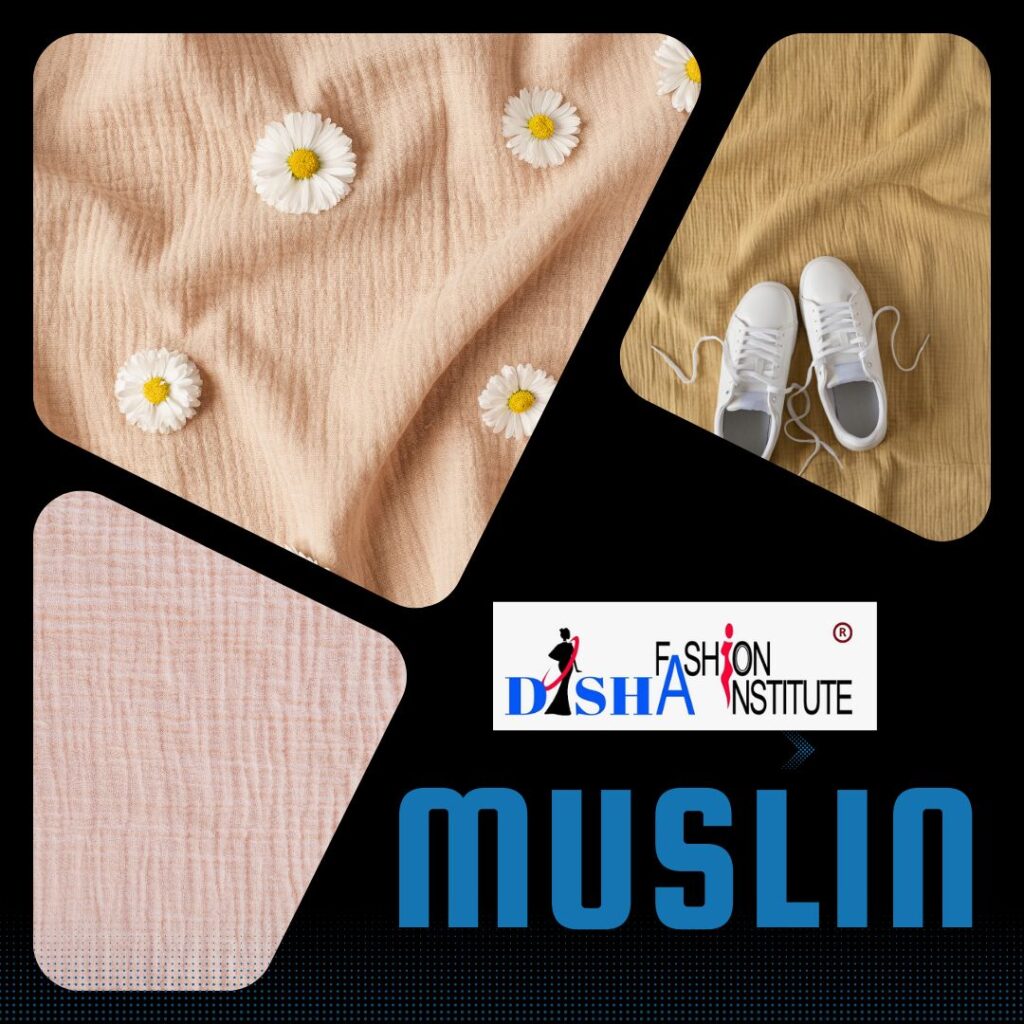
Muslin is a lightweight cotton fabric of plain weave known for its delicate weave and soft texture. It is made in a wide range of weights from sheer to coarse sheeting.
In 2013, the traditional art of weaving sheer, translucent Jamdani muslin in Bangladesh was included in the list of Masterpieces of the Oral and Intangible Heritage of Humanity by UNESCO.
Muslin is believed to have originated in the Indian subcontinent, particularly in present-day Bangladesh and West Bengal, India. Muslin gained popularity during ancient times and became a prized fabric for trade. It was highly sought after in the Roman Empire and was traded along the Silk Road, reaching as far as Europe. It reached its zenith during Mughal Era. Dhaka became a significant centre for high-quality muslin production. Muslin garments were favoured by European elites, including Marie Antoinette in France and Queen Victoria in England.
The muslin industry experienced a significant decline during the colonial period due to several factors. These included the fall of the Mughal Empire, competition from British textiles, British suppression aimed at promoting their own textiles, and the exploitation of weavers. The impact of the industrial revolution in Europe further exacerbated the challenges faced by the Muslin trade.
However, there has been a revival of interest in muslin in recent times. Artisans and weavers are working to preserve traditional techniques and revive the production of muslin fabrics. Efforts are being made to showcase the beauty and craftsmanship of muslin, and it continues to be valued for its quality and luxury.
Characteristics of Muslin
- Muslin is a finely and loosely woven cotton fabric making it one of the softest and most breathable fabrics on the market. This is a very delicate fabric and lighter than ordinary cotton fabric available in the market.
- Muslin is a type of fabric made from finely woven cotton fibres, which give it excellent breathability. This property makes muslin comfortable to wear, particularly in warm climates.
- Muslin is a versatile fabric that can be easily manipulated. It drapes well and has a natural flow, making it suitable for various applications.
- It has a sheer quality, allowing light to pass through it. Depending on the thickness, muslin can range from semi-transparent to nearly opaque. This makes it popular for creating lightweight curtains, draperies, and sheer garments.
- Muslin has good absorbency, making it suitable for various purposes. It can be used for making towels, washcloths, and baby wipes. Additionally, it is also used as a filter fabric in culinary applications like making cheese or straining liquids.
Uses of Muslin
For its versatility, Muslin is used to make a range of clothing items, as well as baby wipes to home furnishing items, upholstery etc. Due to transparency, good absorbency, and lightweight, muslin is used to make luxurious garments like evening gowns, suits etc.
In the case of photography, Muslin backdrops are commonly used in photography studios due to their smooth texture, versatility, and ability to create a neutral and pleasing background for portraits.
Besides, Muslin is also used in the field of scientific research, such as airflow studies, particle filtration, meteorological balloons, weather observation screens etc.
#5 The Enduring Legacy of Denim: From Workwear to Fashion Phenomenon
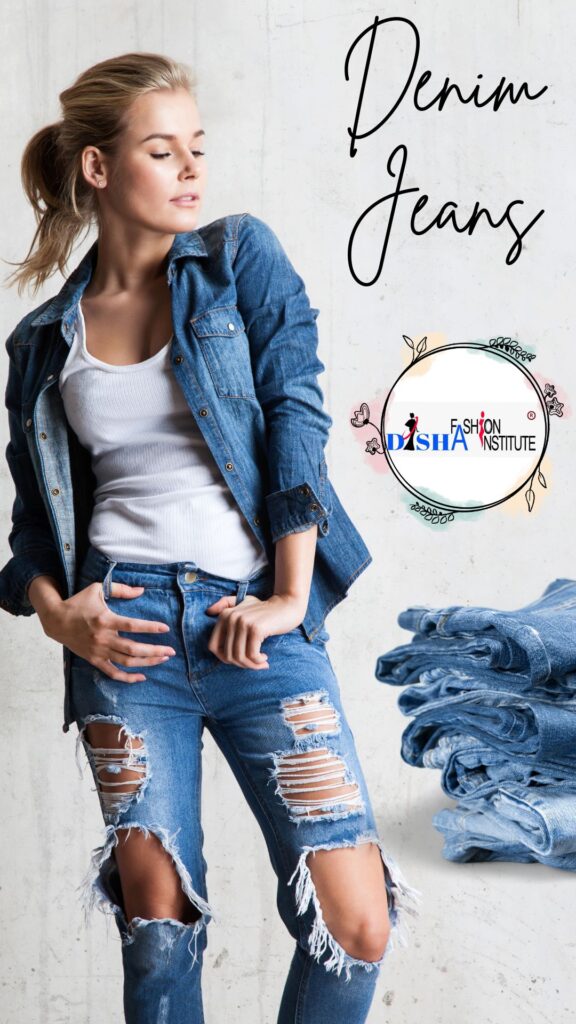
Denim is one of the most popular fabrics all over the world and it has become a part of modern culture irrespective of age, or country. The word ‘Denim’ derives from its birthplace Serge de Nimes, which refers to a particular type of fabric produced in Nimes, France. It was a sturdy cotton twill textile, typically colored with indigo dye and used for a variety of purposes, including workwear, sails, and military uniforms.
Levi Strauss and the Birth of Jeans: In the mid-19th century, denim gained significant popularity in the United States, particularly in the Western regions. Levi Strauss, a German immigrant, played a crucial role in its transformation into the iconic garment we now know as jeans. In 1873, Strauss partnered with Jacob Davis, a tailor, to patent and produce riveted pants made of denim fabric, creating the first pair of blue jeans.
Later, this fabric became popular in Genoa which led to its name Genes or now Jeans now. Due to its durability, Jeans became popular among American gold miners in the 20th century. Then James Dean popularized them in the movie “Rebel Without a Cause”, wearing jeans became a symbol of youth rebellion during the 1950s.
Characteristics of Denim
- Denim is one of the long-lasting fabrics. It is strong, durable, repairable, breathable, and very easy to iron.
- Denim is made out of cotton. Cleaned cotton fibres are combed and made into long, thin strings which are spun into yarns. After dyeing the cotton yarn is woven into warp-faced style.
- Traditionally, denim fabric is dyed with indigo, which gives it a characteristic blue color. Indigo dye has a unique property of gradually fading with wash and wear, resulting in a distinct aged or vintage appearance that is highly sought after in denim fashion.
- Denim can vary in weight and thickness. The weight is often measured in ounces per square yard and ranges from lightweight (under 10 oz/yd²) to heavyweight (over 12 oz/yd²). The thickness of denim affects its durability, warmth, and suitability for different climates and seasons.
Uses of Denim Fabric
Due to durability, and strength, this versatile fabric is generally used to make trousers, jackets, shirts, shorts, hats, belts, aprons etc.
Denim is also utilized in home decor items such as upholstery, curtains, throw pillows, and bedding. This is also used to produce accessories like bags, wallets, hats, shoes, etc. This has a huge application in textile jewellery.
#6 The Timeless Charm of Gingham: From Vintage Classic to Modern Must-Have

Gingham is a kind of plain-woven fabric associated with a checked pattern made from dyed cotton or cotton blended yarns. It is said that the name Gingham may have been derived from its birthplace Guingamp, Brittany, France. Another belief about its origin is in Malaysia in South Asia where a similar kind of fabric was produced called “Ginggang”.
Gingham fabric gained popularity in Europe during the 18th century. It was initially made of linen, but cotton soon became the preferred material due to its affordability and availability. Gingham was commonly used for aprons, dresses, and bonnets, particularly in rural and working-class communities. It has a long legacy in the US, and Europe and still has popularity in both runways and the public.
Characteristics of Gingham Fabric
- Gingham is characterized by its distinctive checked pattern, typically consisting of even-sized, alternating-coloured squares. The pattern can be small or large, and the colors used can vary widely.
- Cotton or cotton blended Yarns are dyed before weaving this checked pattern. Gingham fabric is woven using a plain weave, resulting in a balanced and durable fabric. The plain weave creates a smooth and even texture, making it easy to work with and sew.
- Gingham fabric is usually light to medium in weight, making it suitable for a range of applications.
- Gingham is a strong, substantial, serviceable, durable, and breathable fabric. It absorbs moisture and has an excellent drape.
Uses of Gingham Fabric
Gingham is commonly used in clothing. Besides it is used to make upholstery, home items etc. Its versatility extends to the art and craft world. This is used to make patchwork, quilting etc.
Gingham fabric carries a classic and timeless look that transcends fashion trends. Its checkered pattern has a nostalgic and traditional appeal, making it a popular choice for both vintage-inspired and modern designs.
#7 Coir: Harnessing Nature’s Strength for Practical and Artistic Endeavors
Coir, also known as coconut fibre fabric, is a natural textile material derived from the fibres found in the outer husk of coconuts. It is a versatile material that has been used for various purposes for centuries.
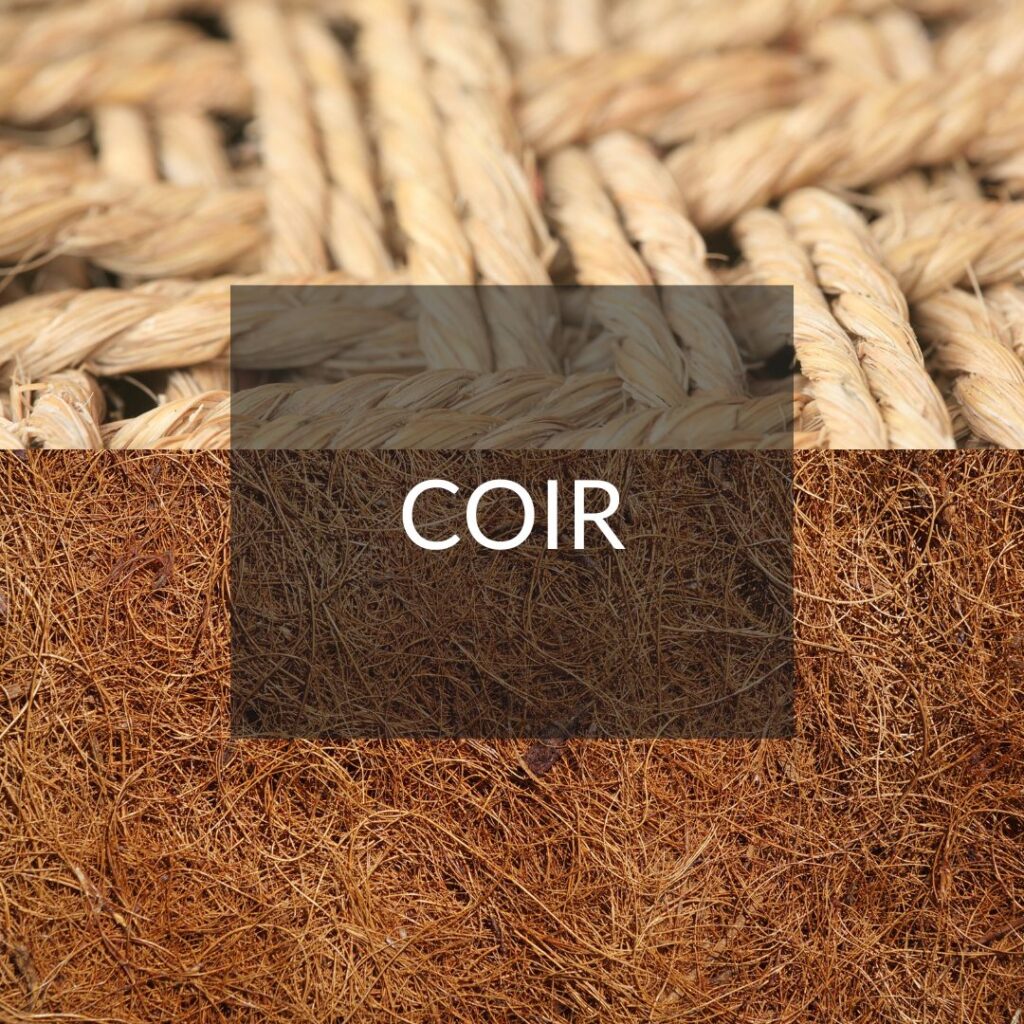
Characteristics of Coir
- It is durable, strong, and resistant to abrasion, making it suitable for heavy-duty applications.
- It is also moisture-resistant, which prevents the growth of bacteria, fungi, and mould. However, it may absorb water if continuously exposed to moisture.
- It can be coarse and rough to the touch, so it can’t be used as the material of garments. Additionally, it may deteriorate over time when exposed to sunlight and certain chemicals.
Uses of Coir
Coir fabric is widely used in the agricultural sector for erosion control, landscaping as well as for making household items rugs, ropes, carpets, doormats, and upholstery. Coir is also popular for making handicrafts, wall hangings, and other decorative items.
#8 Jute: Nature’s Versatile Treasure for Sustainable Creations

Jute is a natural fibre that comes from the stem of the jute plant. It is a long, soft, and shiny fibre that is commonly used to create a wide range of products. Jute is primarily grown in regions with a tropical climate, such as Bangladesh, India, and other parts of Southeast Asia.
Characteristics of Jute
- It is strong, durable, and has good tensile strength, making it suitable for various applications
- Jute fibres are long and soft, with a golden brown color and a natural shine.
- jute is prone to degradation when exposed to excessive moisture and sunlight. It may also be susceptible to microbial attacks, so proper care and storage are essential.
Uses of Jute
As a biodegradable item, jute is widely used to make sacks, bags, rugs, carpets, curtains, and upholstery items as well as handicrafts, and wall hangings. Besides, it can is also blended with fibres, such as cotton, and synthetic fibres which are now very popular due to cheap price and longevity.
#9 Bamboo Fabric: Embracing Nature’s Softness and Sustainability in Textiles
Bamboo fabric is a textile material derived from the fibres of the bamboo plant. Known for its softness, the bamboo fabric offers a luxurious feel similar to silk. This fabric has a relatively recent history, emerging in the early 21st century as a sustainable textile option. The development of bamboo fabric was driven by the desire for eco-friendly alternatives. Its softness, breathability, and other beneficial properties quickly gained popularity in the textile industry.
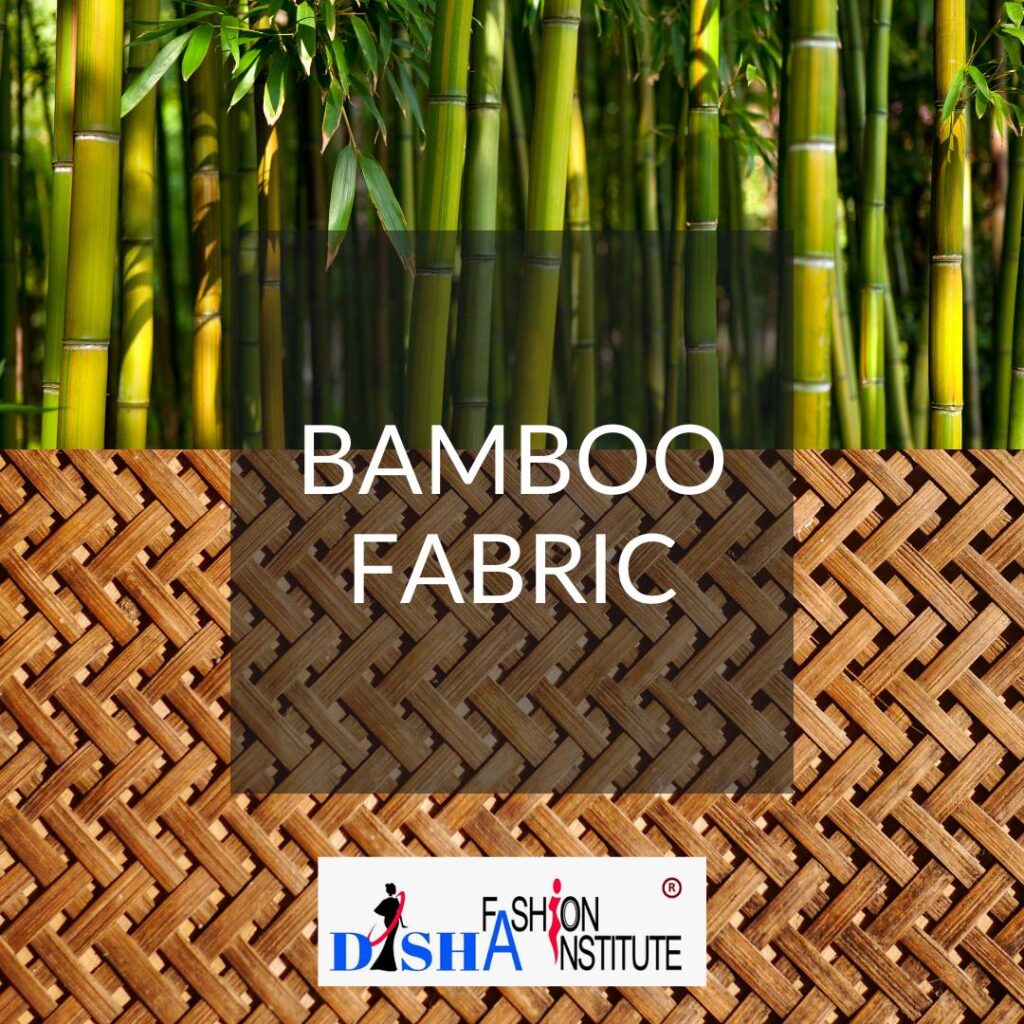
Characteristics of Bamboo Fabric
- It is highly breathable, allowing for better air circulation and moisture absorption compared to many other fabrics.
- Bamboo fabric also possesses natural moisture-wicking properties, effectively keeping the wearer dry and comfortable.
- It is often antimicrobial, inhibiting the growth of bacteria and odour-causing microbes.
- As a sustainable choice, bamboo is a fast-growing plant that requires minimal water, pesticides, and fertilizers.
Uses of Bamboo Fabric
Bamboo fabric has now a huge application in various textile products, including clothing, bedding, towels, and socks. It is also used in home textiles like curtains, and upholstery, and even in eco-friendly disposable diapers.
Conclusion
Cellulose natural fibres offer a sustainable solution with diverse applications across industries. Derived from renewable plant sources, these fibres possess unique properties such as strength, durability, and biodegradability. Their use in textiles, packaging, construction, and more promotes eco-friendly practices. Embracing cellulose natural fibres paves the way for a greener future, where sustainability and innovation go hand in hand.
Click the button below to explore various types of fabrics derived from animal-based protein fibres. Discover their properties, uses, and historical significance.
To learn about various types of man-made fibres, including regenerated fibres and fabrics, as well as synthetic fibres, click on the link below. Gain insights into the world of man-made textiles.
Whether working on a sewing project, managing a manufacturing company, or simply purchasing fabric for yourself or a loved one, choosing the appropriate fabric for garments is of utmost importance. Read the below article to understand 9 must-know factors you need to know while selecting fabric for garments.
We dedicate countless hours to crafting study materials for fashion design students through this blog. Our posts encompass various topics from the fashion designing syllabus. If you have any suggestions, questions, or doubts, please feel free to share them in the comment section below.

